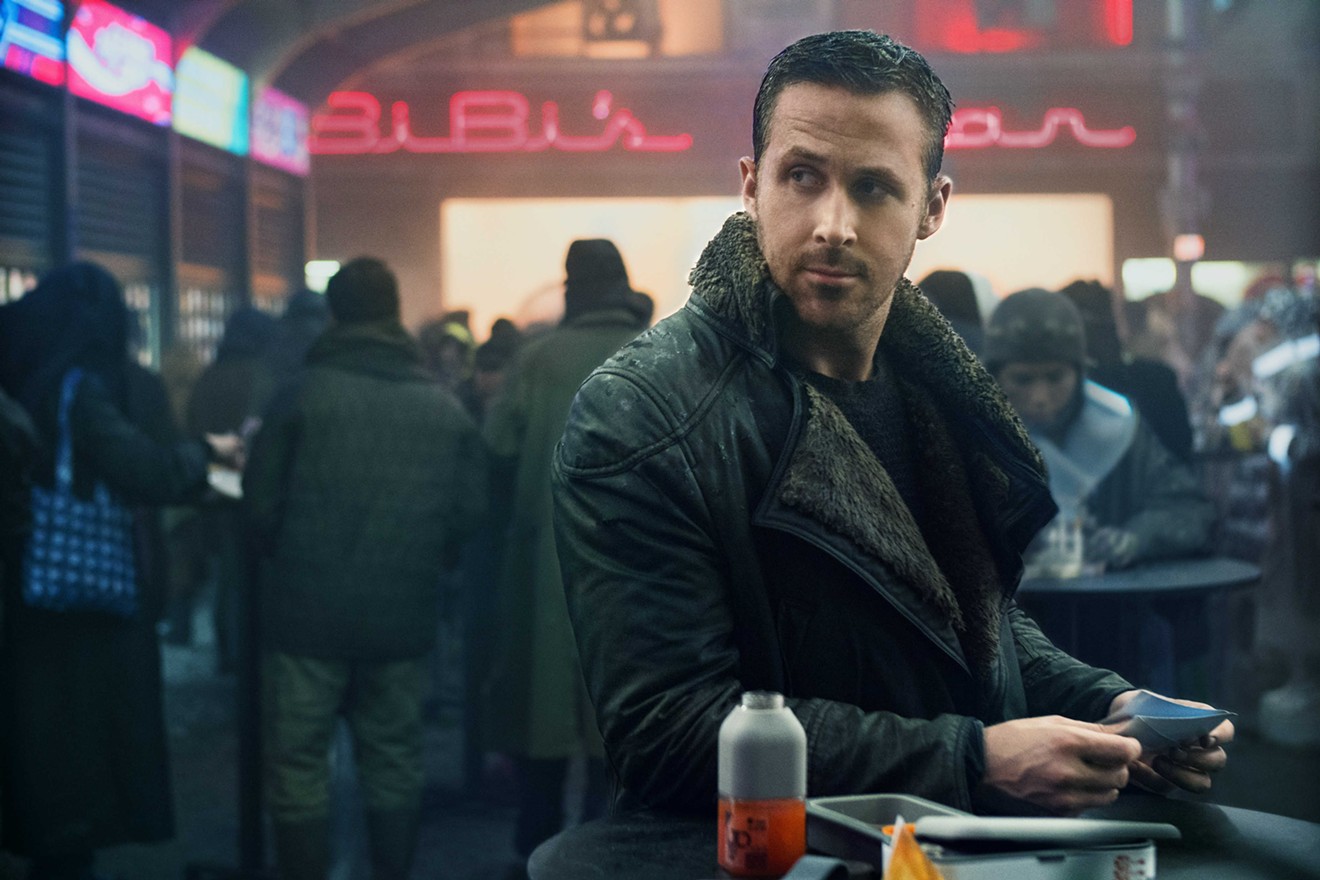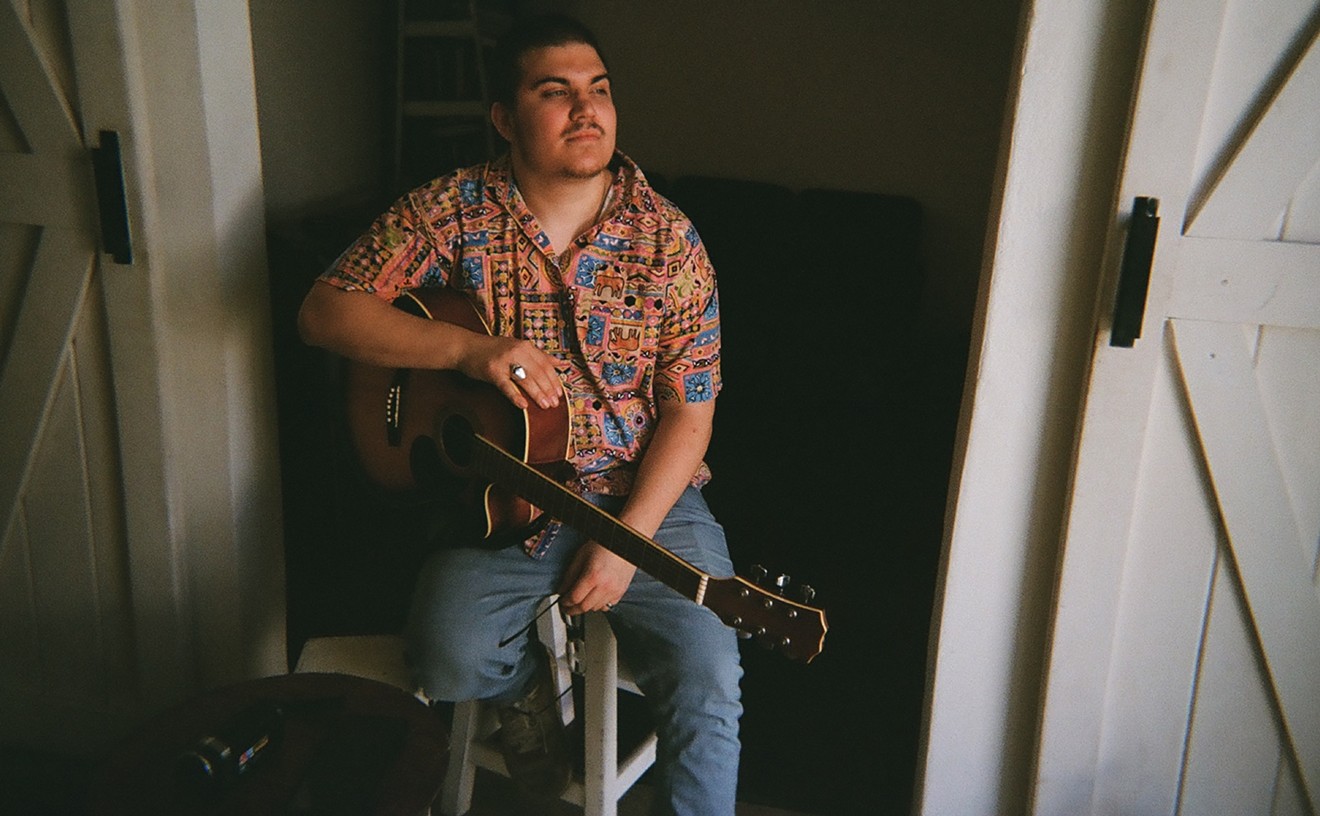The story goes that the stretch of snowy landscape at the end of the original cut of Ridley Scott’s Blade Runner was actually B-roll from Stanley Kubrick’s The Shining, slapped on by Scott at the last minute to help deliver the more upbeat ending his studio requested. Those final moments were excised from subsequent versions of the picture, but to those of us who lived for years with that first cut, they still captured the imagination. Those images hinted that, for all the film’s visions of rainy, nocturnal gloom, there were plenty of unexplored corners to its world. This hope extended beyond just Blade Runner: Anyone raised in the age of Atari and cyberpunk can remember the captivating promise that, if you tried hard enough, you could travel into undiscovered spaces beyond the confines of “the game.” After all, no dystopia is complete without the possibility of escape.
What Scott inadvertently suggested with a few feet of Kubrick’s discards Denis Villeneuve (Arrival, Sicario, Prisoners) has now tried to set out to demonstrate with all the power and majesty of the Hollywood studio system. In Blade Runner 2049, set three decades after Scott’s film, he has to re-create and expand Blade Runner, convincingly imagining how it might have changed over the years and reaching beyond its all-too-familiar milieu to envision the rest of its dying world.
On those counts, he succeeds beyond anyone’s wildest dreams. Blade Runner 2049 is filled with mind-blowing images, with cinematographer Roger Deakins and production designer Dennis Gassner giving us frame after frame of impossible, forbidding beauty: Overhead shots of a gray, cluttered Los Angeles skyline, with brief, mysterious glimmers of those iconic neon screens below; desolate, dust-blasted orange wastelands; abandoned cities stacked with ornate, neoclassical ruins; even, yes, snow. The first Blade Runner was shot by the late Jordan Cronenweth, who found moments of crystalline precision within the grime and the clutter; its world was visually striking, but also somewhat monotone. Deakins, Villeneuve and team have to stay true to the feel of that classic — the original is too beloved for them to dare reinvent it — and yet still give us something new and exceptional. They have achieved all that, and more.
So I’m kind of flabbergasted that I didn’t love this movie.
2049 follows KB36-3.7, also known as K (Ryan Gosling), who (much like Harrison Ford’s Rick Deckard in the original) is a blade runner who hunts down and kills, or “retires,” rogue androids, or “replicants,” despite the fact that he’s one himself. “How does it feel, killing your own kind?” he’s asked by Sapper Morton (Dave Bautista), a former cyber-soldier now hiding from the authorities on a protein farm. “I don’t retire my own kind because we don’t run,” K replies matter-of-factly. “Only older models.” He may be loyal and docile, but our hero is pretty much sneered at by everybody. Replicants hate him for being a blade runner, while everyone else hates him for being a replicant. (“Fuck off, skin job!” a fellow cop yells at him at LAPD headquarters. A similarly profane sentiment is scrawled on the door to his house.) The only “person” who cares for him is an artificially intelligent hologram named Joi (Ana de Armas), a glitchy but still impressive love companion sold by the Wallace Corporation, the company that took over where Tyrell Corporation, which built the androids of the first film, left off.
On one job, K discovers a mysterious crate filled with the bones of a woman who died during childbirth some decades ago. Further analysis reveals that one of the bones has a serial number, suggesting that the woman was herself a replicant — a shock, since synthetic humans supposedly can’t get pregnant. To anyone familiar with Scott’s film, it’s clear quite quickly that these bones belong to Rachael (Sean Young), that movie’s love interest, a creature designed by deluded corporate mogul Tyrell (Joe Turkel) to do all sorts of things a regular android could not.
“This breaks the world,” says Lieutenant Joshi (Robin Wright), K’s superior. She insists that their society “is built on a wall that separates kind. Tell either side there’s no wall, you’ve bought a war. Or a slaughter.” To preserve order, she tasks K with wiping out any trace of this ever having happened; that means finding the child, if it’s still alive, and killing it. Others, too, are interested in Rachael’s offspring. Chiefly Niander Wallace (Jared Leto), a glassy-eyed, messianic weirdo and head of the Wallace Corporation, who brings Turkel’s fondness for oblique maxims from the first film to a whole new level, at every turn uttering goofily elliptical aphorisms and variations on Bible verses. (“An angel should never enter the kingdom of heaven without a gift.” “Before we even know what we are, we fear to lose it.”) Wallace wants to build an army of synthetic slaves, but lacks the power to scale his creations. He’s been trying for years to make one that can procreate.
There’s a lot more plot where all that came from, but it’s best not to give too much away, other than to say that K’s quest will naturally lead him to Deckard himself, with Ford giving a touching performance while getting about as much screen time as Elton John did in the latest Kingsman picture. The story has plenty of twists and turns, though nothing many viewers won’t see coming from a mile away — which is all fine, since Scott’s film wasn’t exactly known for its propulsive narrative drive, either.
For better and for worse, Blade Runner 2049 is a movie made for these indulgent, 280-character cinematic times, when plot points have to be spelled out, themes stated over and over again and little room left for ambiguity. Villeneuve broods and luxuriates, whereas the original Blade Runner had a fractured poetry to it, born probably of Scott’s own indifference to typical story mechanics. The earlier film delicately balanced terse, noirish metaphor with New Age dreaminess. All that has been replaced by something far more aggressive and familiar — a chase/quest narrative that feels not unlike any number of sci-fi/fantasy blockbusters from the past couple of decades. Meanwhile, little echoes of Vangelis’ unforgettable 1982 soundtrack are drowned out by the BRRAAAAAAHHHM of Hans Zimmer and Benjamin Wallfisch’s score. It’s everything, and more, and too much, and somehow not enough.
I realize I’m invoking the first movie way too much here. And yes, sequels and reboots deserve to stand on their own. But it’s hard to leave the original behind when 2049 itself insists on referencing it at every turn, choosing to replay entire subplots from its legendary forebear as mysteries to be unearthed. That feels like a miscalculation. Part of the magic of Blade Runner was what was missing: It was like an earworm, insinuating itself into your brain thanks in part to the fact that it felt strangely incomplete. You wanted to see it again because you needed to see it again; its mysteries began when the end credits rolled. Careful, dutiful and beautiful, Blade Runner 2049 cannot achieve the sublime slipperiness of Scott’s masterpiece. Whether it even needs to is up to you.
[
{
"name": "Air - MediumRectangle - Inline Content - Mobile Display Size",
"component": "18855504",
"insertPoint": "2",
"requiredCountToDisplay": "2"
},{
"name": "Editor Picks",
"component": "17105533",
"insertPoint": "4",
"requiredCountToDisplay": "1"
},{
"name": "Inline Links",
"component": "18349797",
"insertPoint": "8th",
"startingPoint": 8,
"requiredCountToDisplay": "7",
"maxInsertions": 25
},{
"name": "Air - MediumRectangle - Combo - Inline Content",
"component": "17105532",
"insertPoint": "8th",
"startingPoint": 8,
"requiredCountToDisplay": "7",
"maxInsertions": 25
},{
"name": "Inline Links",
"component": "18349797",
"insertPoint": "8th",
"startingPoint": 12,
"requiredCountToDisplay": "11",
"maxInsertions": 25
},{
"name": "Air - Leaderboard Tower - Combo - Inline Content",
"component": "17105535",
"insertPoint": "8th",
"startingPoint": 12,
"requiredCountToDisplay": "11",
"maxInsertions": 25
}
]











